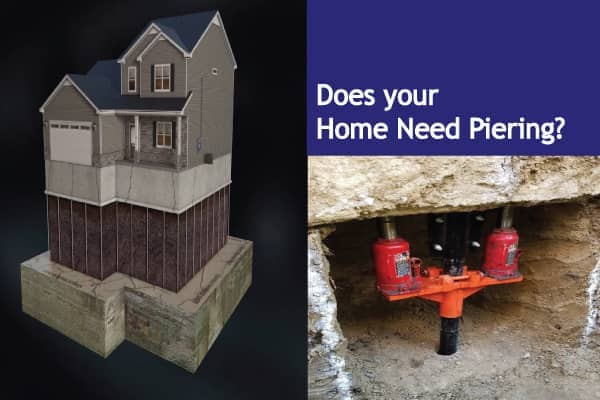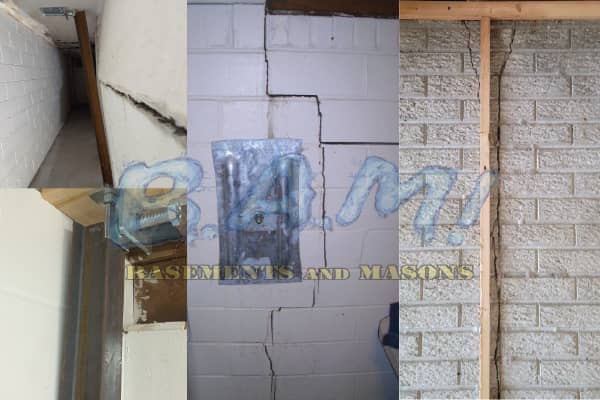The Ultimate Guide To Best Basement Waterproofing
The Ultimate Guide To Best Basement Waterproofing
Blog Article
Some Known Facts About Best Basement Waterproofing.
Table of ContentsSee This Report about Best Basement WaterproofingTop Guidelines Of Best Basement WaterproofingThe smart Trick of Best Basement Waterproofing That Nobody is DiscussingThe Buzz on Best Basement WaterproofingGet This Report on Best Basement Waterproofing
What triggers water damages concerns in your basement? Here are a few things to search for: when the foundation of your home is endangered, water is excellent at slipping in between little fractures and gaps and causing damages. Pipes that line the within of your wall surfaces are just one instance of where water damage can happen.The dirt and ground of your home is extremely vital. If there is excessive water surrounding your home, nevertheless, it can press the soil into your home and trigger the seals of your cellar to come to be endangered. Best Basement Waterproofing. when you see excess water in locations where it ought to not be, that is an extremely great sign that you have a trouble
Concrete waterproofing finishings are cement-like; once completely dry, they adhere completely to concrete and stonework wall surfaces. You use the finishing with a hefty brush made with bristles swirled during application for an attractive, ended up look. However, concrete water-proof layers can't be related to previously painted surfaces Silicate-based concrete sealants, also understood as densifiers, are also appropriate only for walls that have not been painted or secured.
Because these are penetrating sealants, they can not exfoliate or peel off, and you can have paint applied over them. The American Eagle team might find more complex reasons for your moisture issues; there are extra solutions offered. Plastic sheets and panels could be integrated with indoor cellar water drainage systems. They do not stop water from making it through the wall, but they do stop it from destroying things in the basement.
Best Basement Waterproofing - Truths
A sump pump is needed to move water out of your cellar. In order to correctly recommend a solution for your damp basement, call American Eagle for a no-obligation go to. Our service technicians will be able to clarify which remedies are choices for your home. Why should you waterproof your cellar? Right here are a few points the experts can install to aid the waterproofing procedure: this is developed for the wall surfaces of your cellar (Best Basement Waterproofing).

Basement waterproofing is an excellent means to get ahead of prospective water damages that might come your way.
Best Basement Waterproofing Fundamentals Explained
When it involves shielding your home, among one of the most crucial actions you can take is basement waterproofing. A dry cellar not just makes sure a risk-free and healthy environment for you and your family, yet it also aids to avoid pricey water damages and mold and mildew development. In this blog site article, we will certainly discuss the value of basement waterproofing, the benefits it offers, and how you can set about safeguarding your room.
By spending in cellar waterproofing currently, you can assist to make sure that your home keeps its worth and appearance over time. Another advantage of cellar waterproofing is that it can assist to reduce your energy expenses. A wet basement can contribute to greater degrees of humidity in your house, which can make your a/c system work harder to maintain a comfortable temperature level.
When it concerns cellar waterproofing, there are a number of techniques that can be used to keep water out of your room. These include indoor sealers, exterior waterproofing membrane layers, and drain systems. The most effective approach for your basement will rely on aspects such as the level of water intrusion, the condition of your foundation, and your budget.
In verdict, basement waterproofing is a critical step in protecting your home from water damages, mold development, and various other concerns. By spending in cellar waterproofing, you can guarantee that your area stays completely dry, secure, and healthy and balanced for you and your family members. Not only does cellar waterproofing see this page provide comfort and defense for your home, however it can also raise its worth and conserve you money on energy costs in the long run.
How Best Basement Waterproofing can Save You Time, Stress, and Money.
Inside sealers are a type of basement waterproofing technique that involves using a sealant to the within of the basement wall surfaces and visit floorings. Water can seep into a cellar through splits, gaps, or permeable concrete, especially in locations where there is high groundwater or bad drain. This can cause water damage and mildew development, in addition to damages to the structure and architectural stability of the structure.
The sealant creates an obstacle that protects against water from seeping through the concrete. This approach is only effective for small water damage and does not deal with the underlying reasons of the moisture. The main source of the requirement for outside basement waterproofing is water infiltration from the beyond the foundation walls.
It is a reliable service for preventing water damage and maintaining the structural stability of the building. It can be pricey and turbulent to mount, as it calls for excavation around the structure and might entail landscape design and various other repair services once the waterproofing is total. Nonetheless, this technique is the most reliable and long-lasting remedy for avoiding water seepage in see post the cellar.
All about Best Basement Waterproofing

Report this page